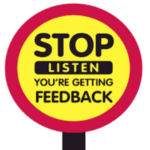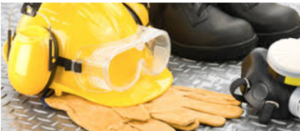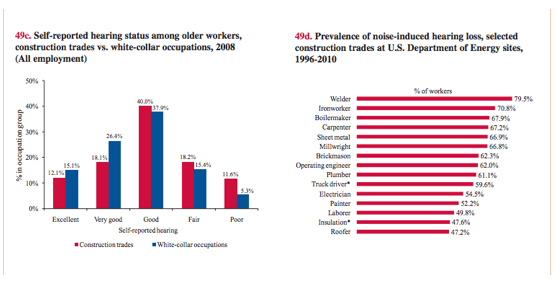Its that time of the year again.
As a Hearing Conservation company we wanted to provide you with a few tips for protecting your hearing during the festivities:
- Try to reduce as much background noise as possible. If you are having a conversation with a small group of people in a larger party, try to break off into a smaller section of the room that may not be as loud. Choose the calmest section of a restaurant or party to socialize in.
- Sit in the center of the dinner table so you are close to people all around you. If you sit at the end of a long table, your chances of hearing the folks at the end of the table are minimal.
- Try to keep good lighting to facilitate your ability to rely on facial cues to help fill in the blanks when you mishear something. We all lipread a bit.
- If the music is too loud at a party – as it often is – don’t hesitate to ask for the volume to reduced slightly or pull out your reliable dB Blockers to block some of that unwanted noise.
You shouldn’t have to think about hearing over the holidays, however, if you find yourself constantly working hard to hear, or relying heavily on the tips above, it is time to have a hearing test. Contact us and we can help you protect your ears!
Holiday Season Hours:
CLOSED
Friday, December 21, 2018 -10:30 am – Tuesday, January 1, 2019
will reopen under regular hours Wednesday, January 2, 2019
OPENED (HOLIDAY HOURS)
Thursday, December 27th, & Friday, December 28th, 2018 – 8:00 am to 3:00 pm (PST)
Inquiries may be made at hear@protectear.com
From all of us at Custom Protect Ear –
Happy Holidays!


 organizational environment, or economic hardships. Stress in the workplace is an ongoing trend that seems to impact employees and employers in all workplace settings.
organizational environment, or economic hardships. Stress in the workplace is an ongoing trend that seems to impact employees and employers in all workplace settings. frequently, utilizing innovations for capturing that feedback, and acting to drive engagement based on those results. In 2016 & 2017 more organizations implemented some sort of Employee Engagement program to capture the employee voice and concern through a series of quantitative surveys and continuous listening/pulse surveys and examining passive data for employee opinions and behaviors. As the workforce shifts from one generation to the next, we will see an increase in Employee Engagement and Feedback.
frequently, utilizing innovations for capturing that feedback, and acting to drive engagement based on those results. In 2016 & 2017 more organizations implemented some sort of Employee Engagement program to capture the employee voice and concern through a series of quantitative surveys and continuous listening/pulse surveys and examining passive data for employee opinions and behaviors. As the workforce shifts from one generation to the next, we will see an increase in Employee Engagement and Feedback. lasting implications for organizational culture and management. Millennials and later generations have reshaped the workplace in a multitude of ways and will continue to push boundaries and redefine expectations as they take on a more prominent role within organizations. Organizations may need to continue to redesign jobs and workspace to accommodate Millennials.
lasting implications for organizational culture and management. Millennials and later generations have reshaped the workplace in a multitude of ways and will continue to push boundaries and redefine expectations as they take on a more prominent role within organizations. Organizations may need to continue to redesign jobs and workspace to accommodate Millennials. Safety Engineer.
Safety Engineer.

